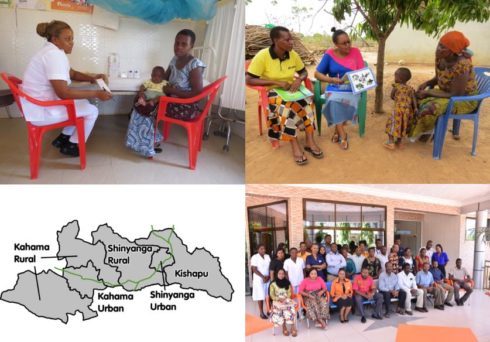
With the discovery of Tanzania’s largest gold mine in Shinyanga’s Kahama district, people from around the country began to migrate to the area. This sudden increase in population brought higher incidence of infectious diseases with it. Today, Shinyanga is the region with the fourth highest prevalence of HIV in Tanzania and Kahama district’s HIV prevalence of 9.4% is almost twice as high as that of the general Tanzanian population’s. Nearly one of every ten residents in the district is HIV-positive, and despite the mining industry, it remains one of the poorest in Tanzania.
HIV is not curable; therefore, public health efforts to reduce its prevalence must focus on controlling the infection’s transmission. As mother-to-child transmission of HIV is known to be a significant barrier to countering the HIV epidemic, World Vision Tanzania undertook a community-based project to improve antenatal care uptake and quality in Kahama district, Shinyanga.
The World Health Organization (WHO) lists antenatal care as one of three essential pregnancy-related services that should be available to all pregnant women as part of a comprehensive prevention of mother-to-child HIV transmission (PMTCT) package. Adequate antenatal care ensures that pregnant women are seen by skilled health-care professionals in order to ensure the best possible health conditions for both mother and child during pregnancy.
[I]n Tanzania, many expectant mothers do not make use of this care or do not attend all four recommended sessions.
Despite the scaled-up presence of these services in Tanzania, many expectant mothers do not make use of this care or do not attend all four recommended sessions. In addition to this, women often do not receive the full range of necessary services associated with antenatal care. World Vision Tanzania hypothesised, therefore, that by mobilising community members to be advocates for antenatal care services, some barriers to effective care would be overcome and more women would effectively access quality services.
In this intervention project, World Vision Tanzania trained 74 community health workers (CHWs) with key skills to connect pregnant women with PMTCT services. Eighty-two community leaders and key informants were also trained and became part of the community PMTCT (c-PMTCT) programmes. The c-PMTCT programmes further included 45 community care coalition members and 19 faith leaders who were trained to support c-PMTCT at their congregations through awareness creation and the formation of action teams. These action teams were also trained to follow-up with pregnant women in their respective communities.
As part of the project, surveys were developed to track the success of the c-PMTCT project. Data were also retrieved from local health facilities. Before-and-after comparisons demonstrated that women were more likely to receive antenatal care from a nurse, midwife, or at a hospital after their respective communities were exposed to c-PMTCT programmes. They were also more likely to attend all four antenatal care visits that are recommended by WHO, receive HIV testing or counselling and have greater knowledge of HIV after the implementation of c-PMTCT programmes.
[I]f public health professionals want their programmes to be as effective as possible, they have to also engage communities.
The evaluation of this project brings new insight into increasing utilisation of antenatal care and uptake of PMTCT services through capacity building and community mobilisation of health care workers, CHWs and community resource owned persons including community government leaders, faith leaders and traditional leaders. More broadly, the results of this evaluation show that antenatal care uptake is dependent on more than simple individual decision making; if public health professionals want their programmes to be as effective as possible, they have to also engage communities.
Comments